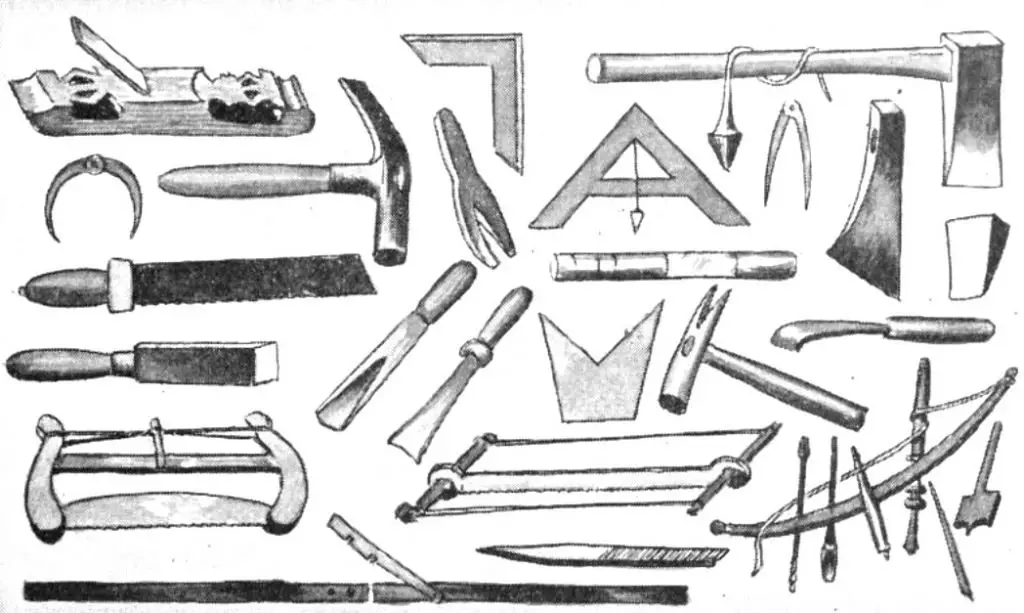
The following is a brief summary of the history of woodworking and woodworking tools from the prehistoric stone age, to the rise of woodworking machinery.
Stone-Age Woodworking
The first woodworking tools were made of stone about 300,000 years ago.
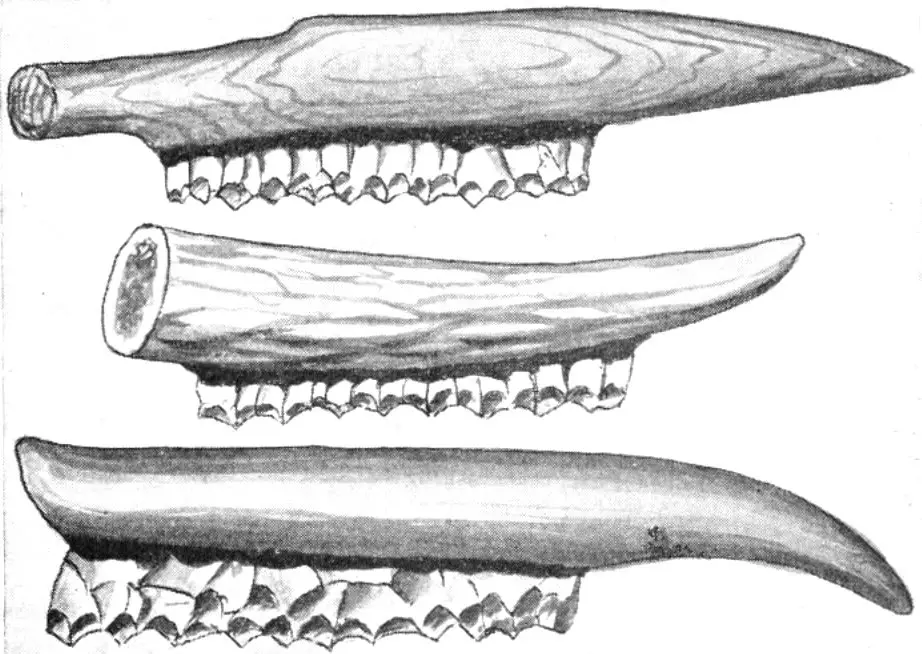
Stone axes, wedges, scrapers, saws, and drills, used at that early age, have been found all over the world.
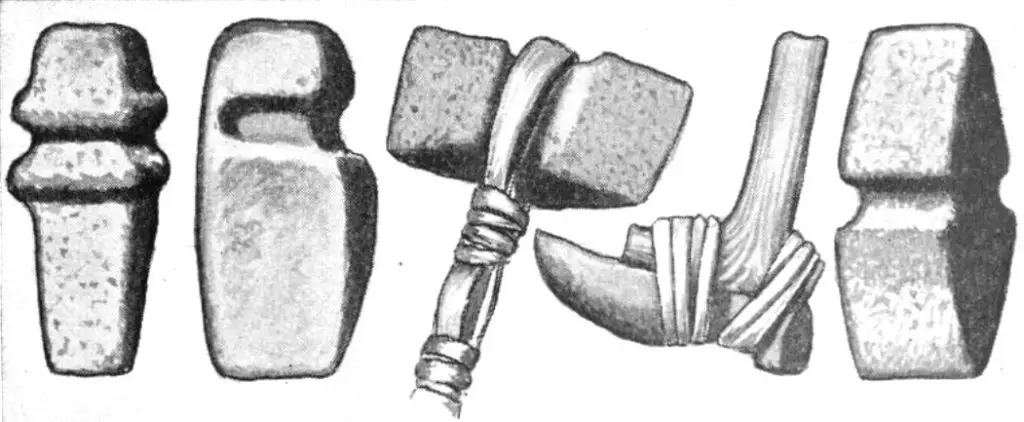
The oldest of these tools were very crude, but the ones made during the latter part of the stone age were ground to beautiful shapes, on other stones, and some of them were even polished.
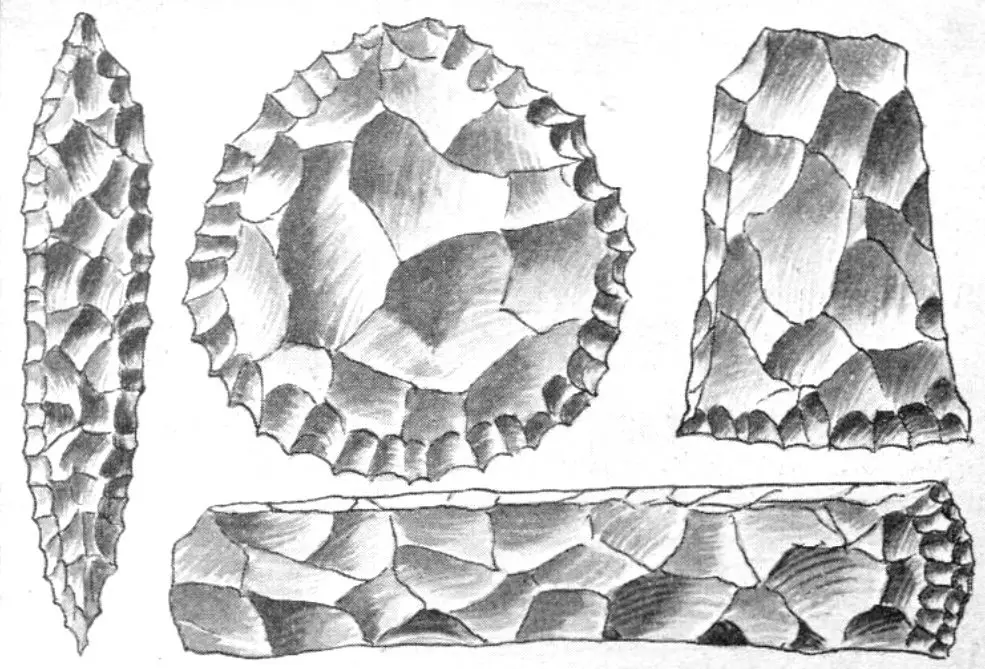
Copper, Bronze, and Iron Age Woodworking
Metals were first used by the people in that part of the world now called the Middle East.
The first metal tools were made of copper. Then someone discovered that, by adding a small amount of tin, the metal became harder and therefore more serviceable.
This was the beginning of the bronze age when the ancient cities of Troy, Babylon, Ur, Thebes, and others were built.
The first bronze tools were cast in one-piece stone molds and were rather crude.
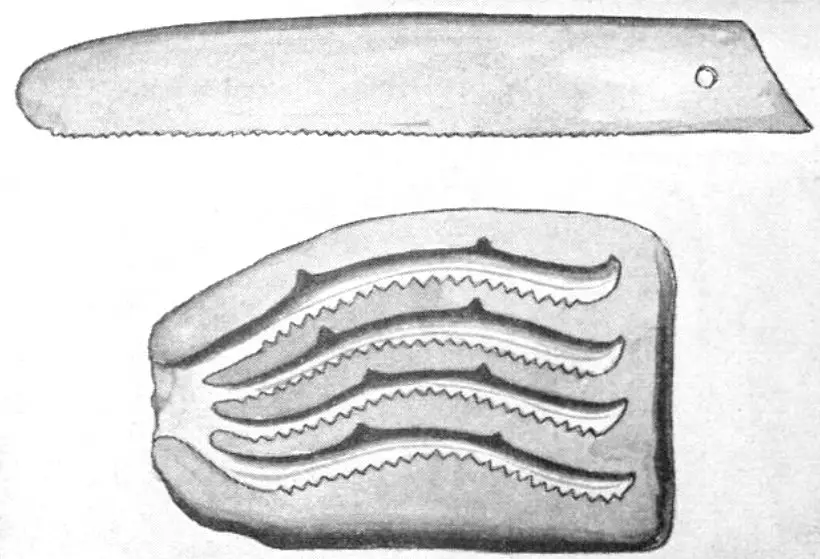
Bottom: A Stone mold used for casting bronze saws found in Sweden.
The next step in the development was the two-piece mold with both halves alike.
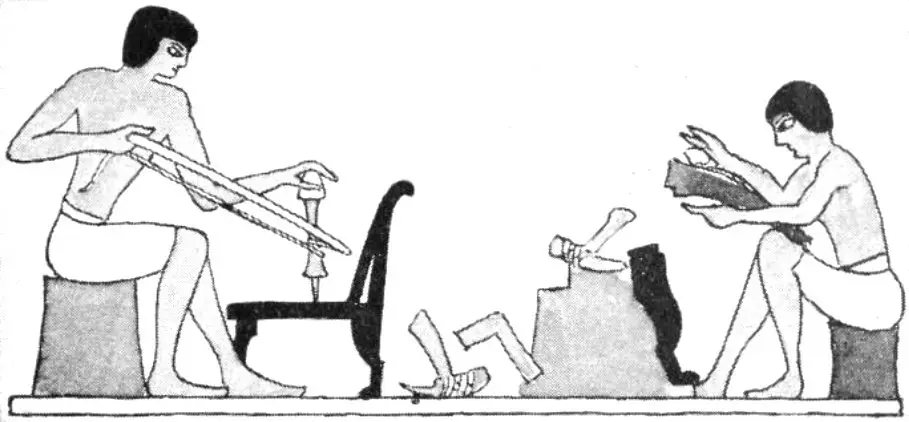
Tools and utensils found during comparative recent excavations show that these ancient peoples — Sumerians, assyrians, Egyptians, and others — possessed a high degree of manual and artistic skill and made a distrinct contribution to the advancement of civilization.
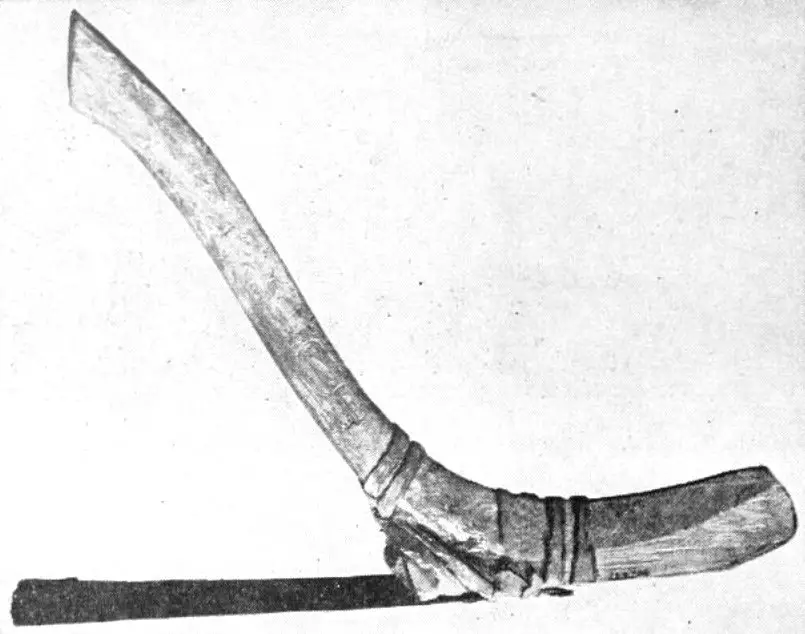
Written records and pictures describe how carpenters, smiths, and other artisans worked and what tools they used.

When the bronze age began is ont definitely known, but a complete set of carpenters’ tools, about 5000 years old, have been found on the island of Crete.
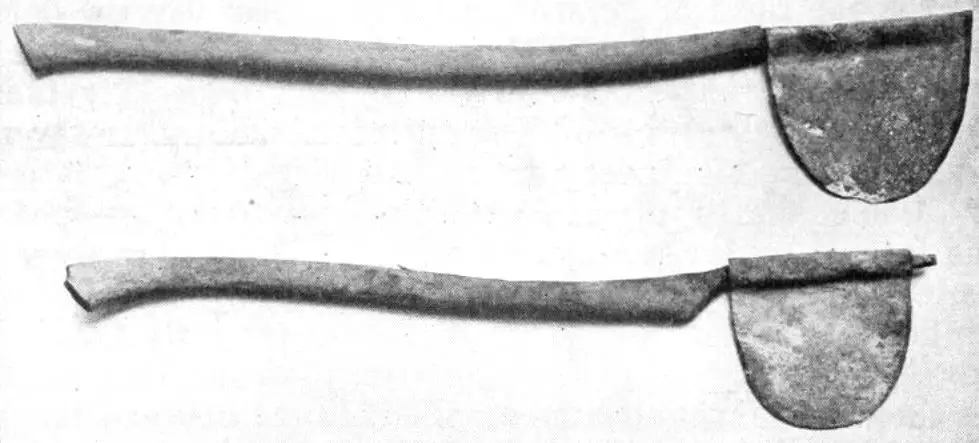
Similar finds have been made at other points in this region.
At the end of the bronze period — about 3000 years ago — when people first began to use iron, most of the caarpenters’ tools had been invented with the exception of the plane and the brace.
Although much superior to bronze, iron tools at first were not well liked.
The early Romans were allowed to use iron for farm implements only, and no workman was allowed to use iron tools in the building of Solomon’s temple.
Bronze tools, therefore, continued to be used together with iron tools for many years.

The ancient Romans were the first people to make saws with regular shape and set teeth.
They also invented the plane, made both tang and socket chisels, and developed the claw hammer.
In face, the carpenters’ tools found in the ruins of Pompeii are a good deal like the ones used by mondern-day carpenters.
Woodworking in the Middle Ages & the Guild System
During the Middle Ages, the early iron tools, especially the saws, were improved in quality.
Not until the fifteenth century, however, were the brace and boring bits invented.
In the Middle Ages workemn in the different trades group themselves and formed trade associations or guildes.
There were three stages or grades in the guilds: the apprentice, the journeyman, and the master.
An apprentice usually began to learn his trade at the early age of twelve.
His parents made a contract with a master, to whom they paid a fee for which the master in return fed and clothed the boy and taught him the skills and knowledge of his trade.
In the early days a master could have only one apprentice besides his own son or nephew.
An apprenticeship lasted from one to twelve years, depending upon the necessary skills and knowledge to be acquired in a particular trade.
At the end of the time of learning, the apprentice had to pass a stiff examination before he could become a journeyman and receive wages for his work.
If a journeyman had sufficient ability and capital to set himself up as a master, he was required to work several years in one of the larger cities to gain experience.
He then had to pass a very rigid test to demonstrate his skill, knowledge, and character, before he could proclaim himself a master.
The guilds were established for the protection and welfare of their members.
These members were take care of when sick and were given employment when out of work.
On the other hand, the guilds had many stringent rules of conduct and workmanship which they enforced by frequent and careful inspections of the shops.
Poor work and materials were destroyed and heavy fines imposed; a man might even be condemned to death for bad and dishonest workmanship.
In this way, craftsmanship during the Middle Ages was kept up to a very high standard of excellence.
By the time machinery was invented, however, the guilds had fallen into disrepute and gradually disappeared.
Masterships were sold by officers of the state without regard to ability, and shops were inherited from father to son.
The master himself became more of a businessman, employing many people, and less of a craftsman working with his apprentices and journeymen.
The Rise of Woodworking Machines
The development of woodworking machinery began around the turn of the 19th century.
While some primitive sawing machines, driven by hand, water, or wind power, had been used in different localities during the Middle Ages, it was not until the end of the eighteenth century that the forerunners of our present woodworking machines were build.
The greatest inventions in this field were made in England by Sir Samuel Bentham, who discovered the principle of rotary cutting, which is used in all modern planers, jointers, shapers, and molders.
The machines built by Bentham were very crude according to modern standards, having only heavy timber frames bolted together to support the cutting element and its bearings.
Not until the middle of the nineteenth century were woodworking machines made entirely of metal.
An interesting fact is that this crude machinery was first used in prisons where it enabled unskilled men to plane, saw, and bore as well and much faster than skilled woodworkers.
The machines proved such a success that they were introduced in the shipyards where the productivity of building wooden ships was increased by a great factor.
The first circular saw was invented in Holland, but was not successful, owning to the difficulty of making bearings and saw blades.
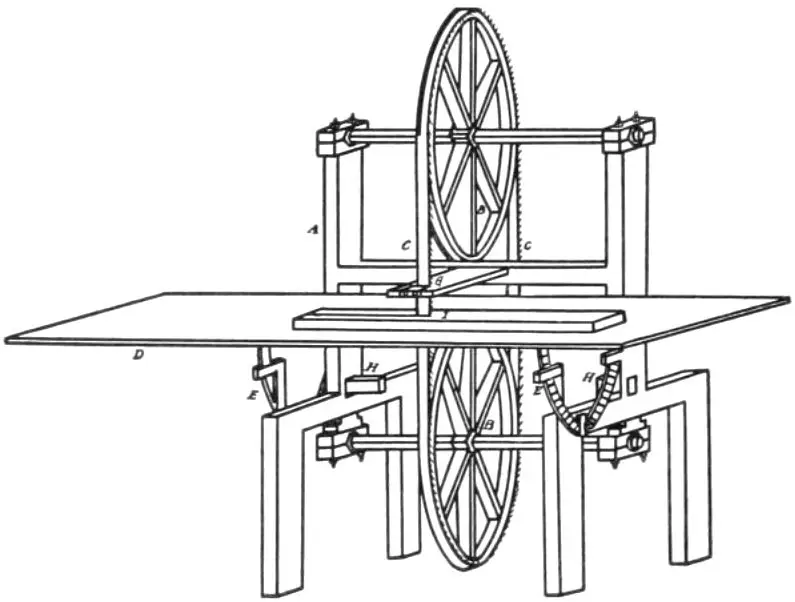
The band saw was invented by William Newberry and was patented in England in 1808.
